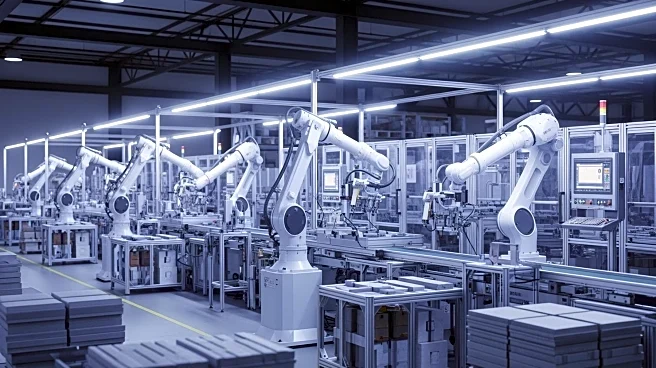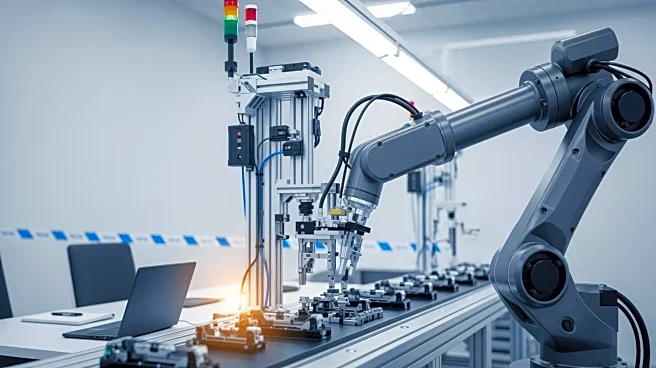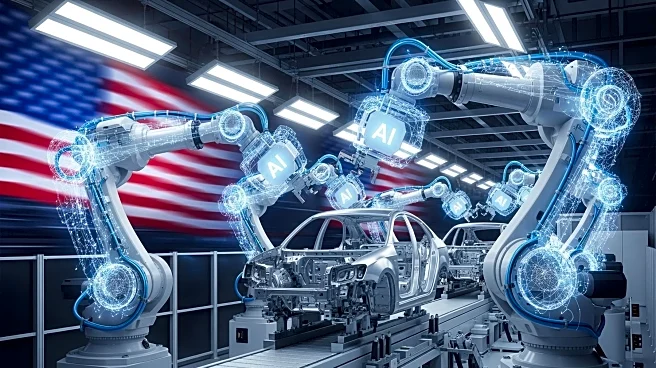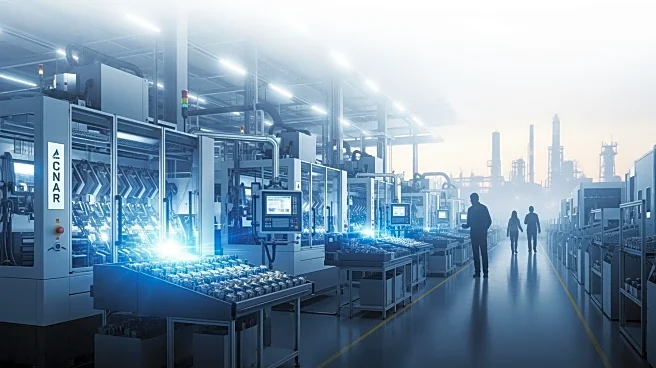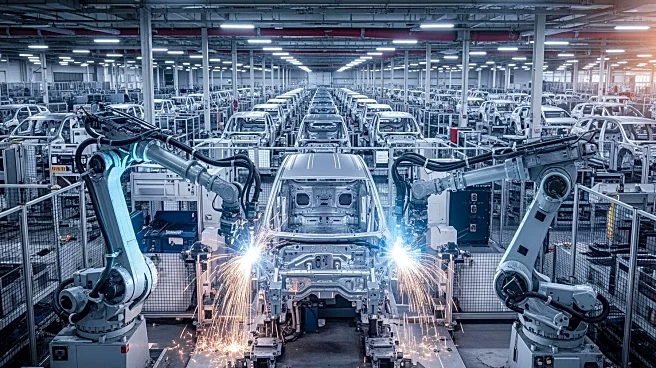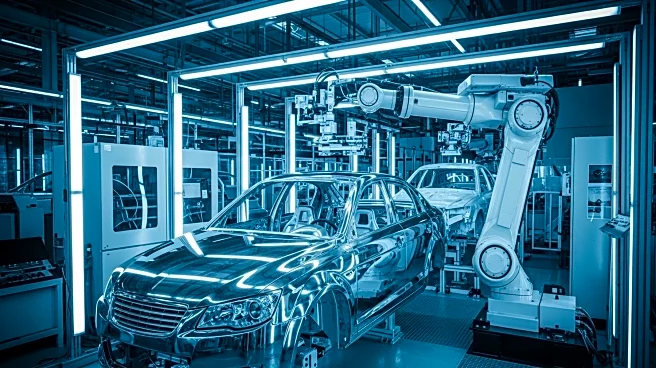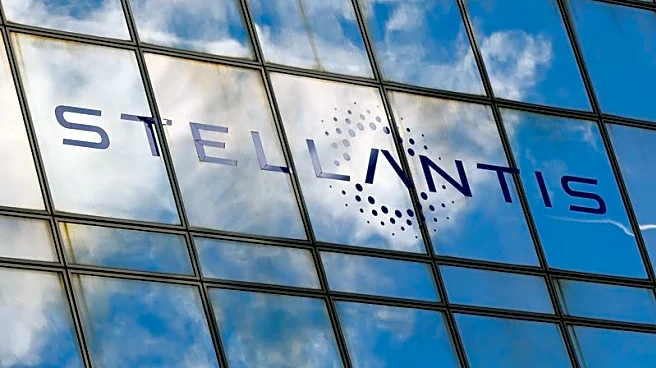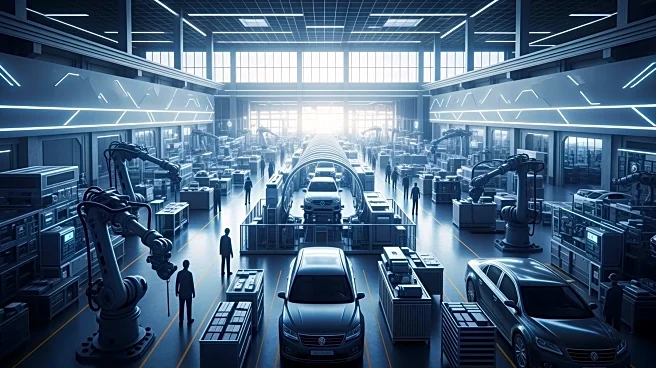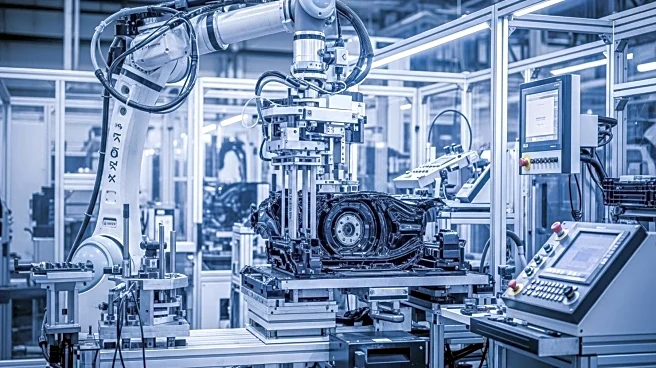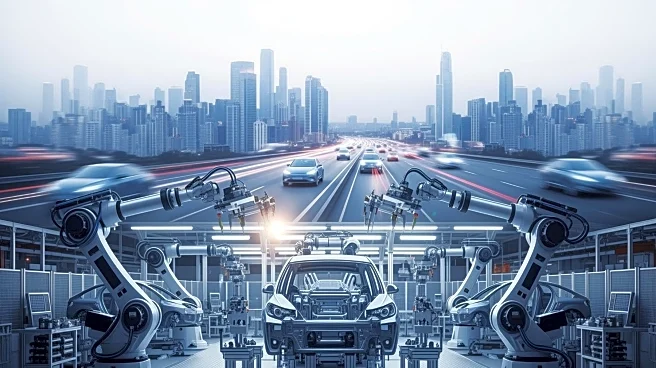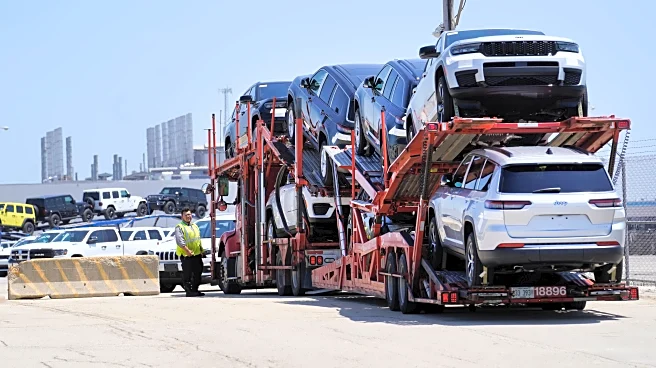What's Happening?
Under President Donald J. Trump's leadership, the U.S. manufacturing sector is experiencing significant growth, marked by substantial investments from major corporations. Stellantis has announced a $13
billion investment, the largest in its history, to expand U.S.-based production by 50% over the next four years. This expansion includes reopening its plant in Belvidere, Illinois, and adding production at facilities in Ohio, Michigan, and Indiana, creating 5,000 new jobs. Whirlpool Corporation is investing $300 million in its U.S. laundry manufacturing facilities, which will generate 600 new jobs in Ohio. Additionally, the GE Aerospace Foundation is launching a $30 million workforce skills training program to prepare the next generation of U.S.-based workers for advanced manufacturing roles. These developments are part of a broader trend of onshoring production and revitalizing American manufacturing, driven by the Trump Administration's policies.
Why It's Important?
The surge in manufacturing investments under President Trump's administration is pivotal for the U.S. economy, as it aims to reinforce the country's position as a global leader in innovation and growth. By onshoring production, these investments are expected to create thousands of high-quality jobs, boosting local economies and reducing reliance on foreign labor. The focus on workforce training and development is crucial for equipping American workers with the necessary skills for advanced manufacturing, ensuring long-term competitiveness in the global market. This wave of investments reflects a strategic shift towards strengthening domestic manufacturing capabilities, which could lead to increased economic stability and prosperity.
What's Next?
The ongoing investments in the U.S. manufacturing sector are likely to continue, with more companies potentially following suit in response to favorable policies and economic incentives. As these projects progress, stakeholders, including political leaders, businesses, and local communities, will be closely monitoring the impact on job creation and economic growth. The success of these initiatives could influence future policy decisions and encourage further investment in other sectors, contributing to a broader economic revitalization. Additionally, the focus on workforce training may lead to collaborations between educational institutions and industries to develop specialized programs that align with evolving manufacturing needs.
Beyond the Headlines
The emphasis on revitalizing American manufacturing under President Trump's administration may have broader implications for U.S. trade policies and international relations. By reducing dependency on foreign production, the U.S. could strengthen its negotiating position in trade agreements and enhance its economic sovereignty. This shift may also prompt discussions on ethical manufacturing practices and sustainability, as companies seek to balance economic growth with environmental responsibility. The long-term impact of these investments could reshape the U.S. manufacturing landscape, fostering innovation and technological advancements that drive future economic development.
